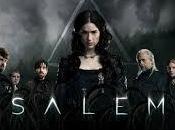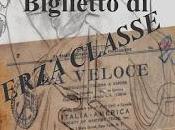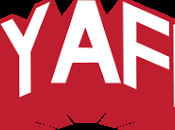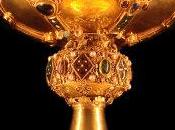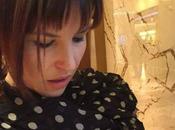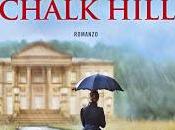
#3
Benvenuto su Word Social Forum Mr. Ziebinski
“How did your passion for photography born and developed into you?/Come nasce e si sviluppa la tua passione per la fotografia?”
I: Come la maggior parte delle persone, il mio rapporto con la fotografia è cominciata scattando foto durante viaggi e vacanze. Col tempo mi sono interessato sempre più alla composizione, l’estetica e il messaggio veicolato da una singola immagine. Per me è un’emozione ogni volta scopro qualcosa di nuovo sulla fotografia – che si tratti di una nuova tecnica o una singola immagine immagino.
E: Like most people I started my relation with photography by taking pictures on trips and holidays. With time I became more and more interested in composition, aesthetics and the message in a single image. Its a thrill for me whenever I discover something new about photography- be it a new technique or a single image I fancy.
“Where do you get the inspiration for your work?/Dove nasce l’ispirazione per i tuoi lavori”
I: A volte, quando sono in vena, comincio a pensare a quello che voglio esprimere… può richiedere molto tempo. Spesso la musica crea diverse immagini che vengono da me, ma non ho mai delle epifanie improvvise.
E: Sometimes, when I’m in the mood I start thinking about what I want to express… it can take a really long time. Very often music creates different images that come to me, but I don’t get sudden epiphanies.

#7

#29

#41
“Which authors have influenced your artistic production the most?/Quali autori hanno influenzato maggiormente la tua produzione artistica?”
I: Nelle arti visive ho molta stima dell’estetica di Wacław Wantuch, il mistero nelle foto di Broke Shaden e l’oscura espressione scura nei dipinti di Zdzisław Beksinski. L’elenco è più lungo, ma ho particolarmente a cuore il lavoro di questi autori. Oltre le arti visive e la letteratura, anche la musica ha una grande influenza su di me. Di recente non riesco a liberarmi dall’album “Ghosts I-IV” dei NIN. Lo sto ascoltando anche adesso.
E: In visual arts I hold esteem for the aesthetics of Wacław Wantuch, the mystery in Broke Shaden’s photographs and dark expression in Zdzisław Beksiński paintings. The list is longer, but I cherish the work of these authors the most.
Aside from visual arts and literature music also influences me a lot. Recently I cannot free myself from the album “Ghosts I-IV” by NIN. I’m even listening to it right now.
“What is was the creative process that led you to create the “Modern Drag Downs”?/Qual è stato il processo creativo che ti ha portato a creare il “Modern Drag Downs”
I: /Mi dispiace… purtroppo preferisco non condividerlo – Spero tu capisca. /
E: /Sorry….. unfortunately I dont want to share this- I hope you understand./
“Has the environment that surrounds you influenced your artistic production in any way?/Quanto l’ambiente che ti circonda ha influenzato la tua produzione artistica?”
I: Sono stato proprietario di una società di servizi fotografici e di un piccolo studio. Dopo aver chiuso la giornata di lavoro, rimanevo lì per sperimentare diverse tecniche. Se non fosse stato per questo studio (che purtroppo ora è permanentemente chiuso) non avrei mai sviluppato questa – chiamiamola così – “sensibilità creativa” che ha portato alla creazione di Modern Drag Downs e altri progetti minori.
E: I owned a photo services company and a small studio. After closing for the day, I stayed and experiment with different techniques. If not for this studio (which unfortunately is permanently closed now) I would have never develop this- lets call it- “creative sensitivity” which led to creation of Modern Drag Downs and other smaller projects.
“The movement of a naked body that leaves a trace of its passage is enclosed inside a click; that’s your works to me. How do you choose the movement to capture in your pictures?/Il movimento di un corpo nudo che lascia una traccia del suo passaggio viene racchiusa dentro uno scatto; questo è il tuo lavoro per me. Come scegli il movimento da catturare nelle tue immagini?”
I: Sperimento. E quando inizi a sperimentare, una sola sessione di foto diventa un’intera catena di nuove idee. Inoltre, ogni modello/a ha un approccio diverso al corpo e al movimento, così ho dovuto concentrarmi sulla natura di ognuno di loro. Ho un archivio estremamente variegate di movimenti scartati.
E: I experiment. And when you start experimenting a single photo session becomes a chain of new ideas. Also every model has a different approach to body and movement, so I had to focus on the nature of each model. I have an extremely large archive of discarded captures.

#49

#86

#171
“What is photography for you and, specifically, what is a single photo to you?/Che cos’è per te la fotografia e, nello specifico, una singola foto?”
I: Mi rilassa! Cercare di comporre un’immagine – per me – è una delle sensazioni più belle che ci siano. Una singola foto è una storia da contemplare, quindi dovrebbe contenere almeno un pizzico di mistero.
E: It relaxes me ! Trying to compose an image -for me- its one of best feelings there is.
Single photo is a story to be contemplated, therefore it should contain at least a pinch of mystery.
“Your search of the movement seems to lead to a depersonalization of the individual. The face of the models is not recognizable and their bodies seem to become “other.” What is your vision of the body and how hard it is to represent it without trivialize it?/La ricerca del movimento sembra portare ad una spersonalizzazione dell’individuo. Il viso delle modelle non è mai riconoscibile, eppure i loro corpi paiono diventare “altro”. Qual è la tua visione del corpo, e quanto è difficile rappresentarlo senza banalizzarlo? “
I: Non volevo che l’erotismo dominasse le foto, il mio obiettivo era anche quello di nascondere “l’umano”. La mancanza del viso e sole tracce del corpo creano una sorta di ansia. Volevo che quest’ansia toccasse lo spettatore. Lo porta a porsi domande tipo “chi/cos’è?”, “sta ballando o strisciando?”, eccetera. L’arte dovrebbe farti fare delle domande.
Con la sfocatura e la sfumatura il movimento del corpo umano, nelle fotografie create dall’otturatore aperto a lungo, possono essere rappresentate in un modo non sessuale. D’altro canto non si può nascondere del tutto la sessualità, credo che sia impossibile.
Se riesci a spogliare il corpo umano dallo strato della sessualità, questo diventa una combinazione di curve e figure geometriche disposte in una meravigliosa armonia.
E: I didn’t want for eroticism to dominate the pictures, my aim was also to hide “the human”. Lack of face and only traces of the body creates some kind of anxiety. I wanted for this anxiety to touch the viewer. It also makes the viewer to pose questions “who/ what is it?”, “is it dancing or crawling?” etc. Art should make you wonder.
By blurring and smoothing the movement of the human body with long shutter photography one can present it not in a sexual kind of way. However you can’t hide sexuality entirely, I think its impossible.
If you manage to strip the human body off the layer of sexuality, it becomes a combination of curves and geometric figures arranged in a wonderful harmony.

#194
“Art must embrace or fear the money? What is you concept of art, and the concept of art as a mean to get money?/L’arte deve abbracciare o temere il denaro? Qual è il tuo concetto di arte e dell’arte usata come mezzo per ottenere dei soldi? “
I: Non vendo le mie fotografie, quindi non mi sento del tutto competente nel rispondere a questa domanda… l’argomento è molto complesso.
Lasciate che l’artista faccia quello che vuole – alcuni creano solo per soldi (insomma, voglio dire, si deve pagare pur l’affitto, ecc.), mentre altri non vogliono o non ne hanno bisogno – chi sono io per giudicare quello che è giusto…
Se la si guarda da una macro prospettiva l’arte, semplicemente, non paga – economicamente parlando. Non crea alcun tangibile valore aggiunto. Eppure, per una parte della società, sperimentare l’arte è importante quasi come respirare e mangiare – è un paradosso. Ecco perché lo Stato deve sovvenzionare la cultura e l’arte a tutti i costi. Questo va in contraddizione con le regole del capitalismo. La Polonia – il mio per paese – ha abbracciato il capitalismo non molto tempo fa e ci sono un sacco di persone che pensano solo in base alla redditività.
E: I don’t sell my photographs, so I don’t feel entirely competent to answer this one…. The topic is really complex.
Let the artist do whatever they want- some create just for money (I mean, you have to pay the rent etc.), while other don’t want or need to- who am I to judge which is right…
If you look at it from a macro perspective art just doesn’t pay off- economically speaking. It doesn’t create any tangible added value. However, for some part of the society experiencing art is almost as important as breathing and eating- it’s a paradox. Thats why the state must subsidize culture and art at all cost. This stands in contradiction with the rules of capitalism. Poland – my country- embraced capitalism relatively not so long ago and there is a lot of people who think solely in categories of profitability.
“What is your opinion about the current situation of contemporary art?/Qual è la tua opinione sull’attuale situazione dell’arte contemporanea?”
I: Grazie a Internet l’arte è esposta al pubblico medio, ma allo stesso tempo la si indirizza ad un pubblico ristretto. Il pubblico medio chiede un messaggio semplice e letterale – un altro paradosso. Quindi, a mio parere, è ampiamente frainteso. Odio quando sento un commento su – diciamo – qualche quadro astratto, da parte di una persona a caso che dica: “Ehi, questo potrei farlo anche io!”
E: Thanks to the Internet its exposed to general public, but at the same time its addressed to a narrow audience. The general public demands a simple and literal message- another paradox. So in my opinion its widely misunderstood. I hate it, when I hear a comment about- lets say- some abstract painting by some random person: “hey, I could do that easily!”.
“Can you tell us something about your future projects?/Puoi dirci qualcosa sui tuoi progetti futuri?”
I: Ho alcune idee, ma di recente sono stato occupato su altre questioni. Spero di finire almeno un progetto nel 2015.
E: I have some ideas, but recently I was preoccupied with other matters. I hope to finish at least one project in 2015.

#204

#205
All images and materials are copyright protected and are the property of Tom Ziebinski
Official site: http://www.tomziebinski.com
Christian Humouda
Trad. Daniela Montella
